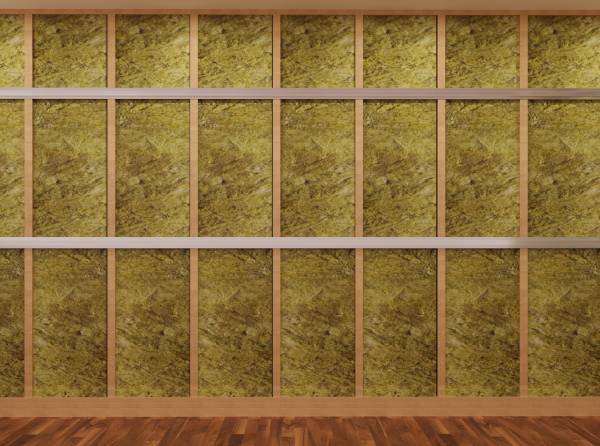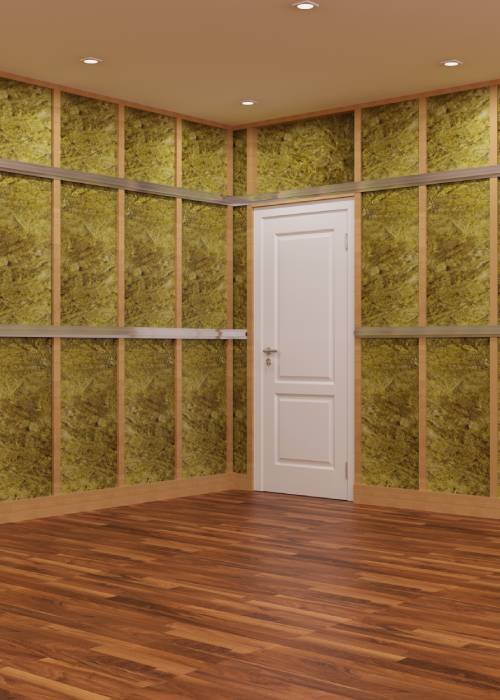Acoustic boards help lessen undesirable reflected sound in any room...
Soundproofing insulation segments with a high density are engineered to effectively absorb sound and minimise noise transmission between spaces. The acoustic insulation segments have a higher density, making them a fantastic lightweight soundproofing tool for your home or space.
The soundproofing insulation segments are suitable for filling in between floors and walls, as well as insulating metal and timber stud wall systems. All of the acoustic insulation segments provide additional thermal advantages, making your house cosier.
Due to its many advantages, gypsum board is the most widely used substrate for false ceilings. One of these benefits is the material’s ability to withstand heat. It has a non-combustible centre that comprises water that has been chemically mixed. These ceilings are designed to withstand extreme heat, and the first thing that occurs when a fire strikes a gypsum ceiling is that water, in the form of steam, escapes. The gypsum board manages to withstand heat even after the water has evaporated. This material can be used in several layers to increase the heat resistance of your home.


Thermal insulation properties can be used in both acoustic and bulk (thermal) insulation. Acoustic insulation, on the other hand, is much denser, giving it better soundproofing properties. Acoustic insulation can be used to create silent areas in your house or to filter out the sound of moving vehicles.
The design must prevent sound from being emitted to prevent you from being interrupted by the action in the next room, whether it be upstairs or in line. There would not need to be a huge concrete slab or wall.
Insulation prevents heat and vibration from passing through our walls, floors, and ceilings. The R-value is a calculation of how much construction materials and buildings withstand heat and sound flow. The higher the R-value, the more effective the material is as a thermal and acoustic insulator.
Break the acoustic foam panels with scissors or a utility knife because they are soft and malleable. However, these tools often leave rough or irregular edges on the foam, giving it an unprofessional appearance. When cutting acoustic foam, use an electric carving knife to prevent these flaws.
For stud wall applications, a minimum thickness of 50mm is recommended. If you go thicker, the extra insulation thickness would provide greater sound insulation. It’s important to keep in mind that doubling up on thicknesses won’t give you double the soundproofing.
You’ll need to address the walls in order to get a space as soundproof as possible. If you don’t want to use an Iso Trax device, you can blast insulation into an existing wall using advanced tools and digging a hole in the wall. Vibration and noise can be reduced as a result.
The gypsum ceilings can give your boring home a new and refreshed look. The ac and lighting wires hanging from the roof would give your interiors an untidy appearance. Gypsum ceilings can make the roofs interesting.
Install bass absorbers, then handle the first reflection points first. Where necessary, add the remedy to your room’s ceiling and all partitions. To stop slap/flutter echo, stay away from wide expanses of bare wall or ceiling. Where feasible, aim for balance on the left and right sidewalls.
The biggest reason acoustic foam is so pricey is that it’s a speciality product for a niche demand. This means that producers will demand more because their commodity is considered to be more important, and consumers can pay for it whether they want it or not. It’s all a matter of supply and demand.
Short of that, the most efficient way to minimise noise propagation is to instal a thick sound barrier in the open joist gaps between the floors. The drywall can be hung on resilient metal channels for additional sound isolation, enabling the drywall to rotate gently to dampen noises.
With acoustic floor insulation, you can eliminate airborne sounds between wooden floors. Use acoustic surface insulation between the floor and ceiling joists to avoid airborne noises from moving through a wooden floor. The best way to reduce airborne sound between floors is to use DFM acoustic insulation between floor joists.
Thick covers, moving mats, tapestries, or quilts may be used to cover the walls. Any soft plastic will do, but thicker fabrics will absorb more sound than thinner ones. Fasten sound-absorbing panels to the walls and, if necessary, the ceiling if you don’t mind the space taking on an industrial look.
Although many people consider acoustic panels to be the main “go-to” weapon for dealing with studio acoustics issues… The reality is that they’re almost useful at absorbing the lowest bass frequencies.
However, acoustical foam is only efficient at absorbing high-end frequencies, but whether you have issues with mid-frequencies or bass, foam is unlikely to help. This is why acoustic plates, rather than foam alone, are commonly used in advanced recording studios.
Are you tired of hearing your neighbours in their apartment laughing and talking? Some of the noises we hear in our homes can be very irritating. They are, after all, a fact of life. If you live in an apartment complex, you will have to get used to them. It may also get so loud that getting work done becomes impossible. If you just want to get rid of these irritating noises and enjoy your home or office space more, acoustic insulation may be a nice choice. Give us a call today, and we will help you out with the best solutions.
Acoustic boards help lessen undesirable reflected sound in any room...
Acoustic boards help lessen undesirable reflected sound in any room...
Open spaces have been known as the trending layout for...
WhatsApp us